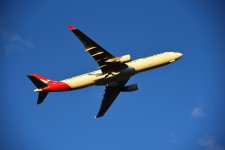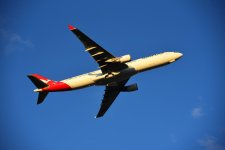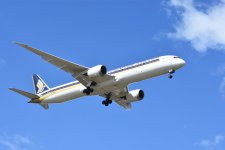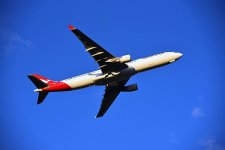Steve in Oz
Senior Member
I know underexposure is talked about regularly with the D750, so please bear with me...
I recently got a pre-loved D750 after a few years enjoying the D7200.
I photograph a lot of aircraft, and I'm fortunate to have a lot of cloudless days.
Photographing jets against a strong blue sky, every frame is underexposed. Here's an example:

This JPG is a RAW file that's gone straight through Capture NX-D with no adjustments other than 'vivid' picture control set on the camera. Matrix metering and ADL off.
I did not have this issue with the D7200. Is the large area of blue sky, or the bright white of the fuselage, throwing the metering in some way?
I recently got a pre-loved D750 after a few years enjoying the D7200.
I photograph a lot of aircraft, and I'm fortunate to have a lot of cloudless days.
Photographing jets against a strong blue sky, every frame is underexposed. Here's an example:

This JPG is a RAW file that's gone straight through Capture NX-D with no adjustments other than 'vivid' picture control set on the camera. Matrix metering and ADL off.
I did not have this issue with the D7200. Is the large area of blue sky, or the bright white of the fuselage, throwing the metering in some way?



